 | |
|
An up close and personal interview with U.S. Navy Veteran and Togetherweserved.com Member:
SCPO Thomas E Jorgensen U.S. Navy (Ret) (1966-1994)
WHAT INFLUENCED YOUR DECISION TO JOIN THE MILITARY?
 I graduated from high school in May 1966. I was aware of the Vietnam conflict and was well aware of the draft. I suspect I would have been drafted even if I had gone to college. I had applied for admission to various universities but was not accepted so I knew that I would be drafted very soon after I turned 18 which was 5 months after I graduated. So I decided to enlist rather than allow myself to be drafted. When I moved to Tampa I visited the Navy recruiter first, took the test, was given the usual line about having one of the highest scores. I was told that I could enter under a program called the High School graduate program (also called Kiddie Cruise) which allowed me to enlist, with my parents signature, at age 17, I would be able to go into the area of service of my choice, get a Navy school and then be released from active duty the day before my 21st birthday. That sounded good to me so I never saw the Air Force recruiter. I asked for something in aviation and that was granted. I graduated from high school in May 1966. I was aware of the Vietnam conflict and was well aware of the draft. I suspect I would have been drafted even if I had gone to college. I had applied for admission to various universities but was not accepted so I knew that I would be drafted very soon after I turned 18 which was 5 months after I graduated. So I decided to enlist rather than allow myself to be drafted. When I moved to Tampa I visited the Navy recruiter first, took the test, was given the usual line about having one of the highest scores. I was told that I could enter under a program called the High School graduate program (also called Kiddie Cruise) which allowed me to enlist, with my parents signature, at age 17, I would be able to go into the area of service of my choice, get a Navy school and then be released from active duty the day before my 21st birthday. That sounded good to me so I never saw the Air Force recruiter. I asked for something in aviation and that was granted.
WHAT WAS YOUR SERVICE CAREER PATH?
I attended boot camp at Naval Training Center, Recruit Training Command Great Lakes, Ill., from Oct. 11-Dec. 21, 1966. I was in Recruit Training Company 606. After graduation I went to Naval Aviation Technical Training Center Memphis, Tenn. for my technical school.
The schools I attended were: Aviation  Fundamentals P (AFUN(P)) School to qualify for promotion to Airman (E-3), Avionics Fundamentals A school where I learned basic electronics and how it was applied to aviation systems, followed by Aviation Fire Control Technician A School where I learned how to troubleshoot and repair bomb director weapon systems. I graduated in July 1967 and was designated an Aviation Fire Control Technician (Bomb) Airman (AQBAN). When I filled out my request for duty I asked for anywhere East Coast, preferably Florida, shore duty. The Navy had other ideas. Fundamentals P (AFUN(P)) School to qualify for promotion to Airman (E-3), Avionics Fundamentals A school where I learned basic electronics and how it was applied to aviation systems, followed by Aviation Fire Control Technician A School where I learned how to troubleshoot and repair bomb director weapon systems. I graduated in July 1967 and was designated an Aviation Fire Control Technician (Bomb) Airman (AQBAN). When I filled out my request for duty I asked for anywhere East Coast, preferably Florida, shore duty. The Navy had other ideas.
The orders I received sent me to Naval Air Station Whidbey Island, Wash. for sea duty. I was attached to Attack Squadron 128 (VA-128) for A6-A Intruder Weapons System Maintenance school and practical training. When my training was completed I transferred to Attack Squadron (VA-145) (Swordsmen) at NAS Whidbey Island as my seagoing squadron. In January 1969, VA-145 deployed aboard the aircraft carrier U.S.S Enterprise CVA(N)-65 for a Western Pacific (WESTPAC) cruise with Carrier Air Wing 9 (CVW-9). We returned to Whidbey Island in July 1969.
During my time with VA-145 I worked as a weapons system diagnostic and repair team member, team leader, nuclear weapons loading team member, and AQ flight deck troubleshooter for the VA-145 A6-A/B aircraft. My job was to diagnose any problems that developed with the aircraft weapon system before flight to make repairs, if possible, so the aircraft would be able to launch and to diagnose any problems after the aircraft landed to give squadron maintenance a "heads up" as to maintenance that would need to be done.
Following our return from the cruise, I was released from active duty in the Navy on October 9, 1969. In January 1971, I affiliated with the Naval Air Reserve at Naval Air Station Jacksonville, Fla. 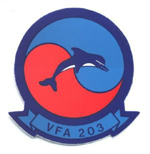 as an Aviation Fire Control Technician Third Class (AQB3) joining Replacement Training Unit 203 (RTU-203) which was the training side of Attack Squadron 203 (VA-203).At that time the Blue Dolphins, VA-203?s nickname, had A4-L Skyhawk aircraft. I was assigned to work out of the Aviation Electronics (AT) shop because there was no electronic weapon delivery system on the A4-L. All the aircraft had was the pilot and the gun-sight. When a billet opened I transferred to VA-203. Soon after that the squadron transitioned to the A7-A Corsair II, later receiving the A7-B followed eventually by the A7-E. Finally the squadron received the F/A-18 Hornet. When the squadron received its Hornets, it was re-designated as VFA-203. In October 1973, I left the Naval Air Reserve to attend Naval Flight Officer training at Naval Air Station Pensacola, Fla. but ended up withdrawing from training. I returned to VA-203 until I retired in March 1994. as an Aviation Fire Control Technician Third Class (AQB3) joining Replacement Training Unit 203 (RTU-203) which was the training side of Attack Squadron 203 (VA-203).At that time the Blue Dolphins, VA-203?s nickname, had A4-L Skyhawk aircraft. I was assigned to work out of the Aviation Electronics (AT) shop because there was no electronic weapon delivery system on the A4-L. All the aircraft had was the pilot and the gun-sight. When a billet opened I transferred to VA-203. Soon after that the squadron transitioned to the A7-A Corsair II, later receiving the A7-B followed eventually by the A7-E. Finally the squadron received the F/A-18 Hornet. When the squadron received its Hornets, it was re-designated as VFA-203. In October 1973, I left the Naval Air Reserve to attend Naval Flight Officer training at Naval Air Station Pensacola, Fla. but ended up withdrawing from training. I returned to VA-203 until I retired in March 1994.
During my time with the Blue Dolphins, I held billets of weapon system diagnostic and repair team member, team leader, Collateral Duty Inspector on the A7-A aircraft, Aviation Fire Control shop supervisor, Aircraft Intermediate Maintenance Department (AIMD) technician, AIMD Chief, VA/VFA-203 Quality Assurance Branch Chief and, later when I was advanced, Quality Assurance Branch Senior Chief, and Maintenance Control Senior Chief. I achieved certification to sign aircraft safe for flight after six months of intense study. I was only able to do my studying one weekend a month so it only took me 12 days to achieve this critical billet.
While I was with VA/VFA-203, I did Active Duty for Training (ACDUTRA) at NAS Pensacola Fla., NAS Fallon Nev., NAS Lemoore, Calif., NAS El Centro Calif., Luke Air Force Base (AFB) Phoenix, Ariz., Marine Corps Air Station (MCAS) Yuma, Ariz., and the aircraft carrier U.S.S Forrestal CVA-59.
I retired from the Navy during a Change of Command drill weekend in March 1994 at the squadron?s hangar at Naval Air Station Cecil Field, Fla. I continue my association with the Navy through membership in the U.S.S Enterprise CVA(N)/CVN-65 Association and the USS Enterprise CVA(N)-65 Fire Reunion group.
On November 30, 2012, I attended a Memorial Service conducted on the flight deck of the U.S.S Enterprise CVN-65. This Memorial Service was to remember and honor the 28 sailors who lost their lives in a major flight deck fire that occurred onboard U.S.S Enterprise on January 14, 1969.
I was one of hundreds of sailors who were on the flight deck that morning and assisted in the efforts to contain and extinguish the fire. To this day, almost 44 years after the fire, it is still an emotional experience to attend the memorial services, which are conducted at each Enterprise Fire veteran reunion. All of us who were there on that morning have vivid memories of what it was like, exploding 500lb bombs and aircraft, burning jet fuel, shrapnel everywhere, men being knocked down.
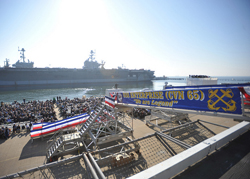 This Memorial Service was particularly intense as it was conducted on the same "ground" where our shipmates and friends perished. On December 1, 2012, attended the Inactivation Ceremony for the USS Enterprise CVN-65, where thousands of former crew members, ship builders and their families lined a pier to bid farewell to the first nuclear-powered aircraft carrier and one of the most decorated ships in the U.S. Navy. While we were excited to learn from the Secretary of the Navy that the next Ford Class aircraft carrier, CVN-80, is slated to carry the name USS Enterprise, it will not be the same ship nor is there any effort being made to preserve "our" Enterprise. She is a one of a kind vessel, the only one of its class, and of a type that will never be seen again and it is a shame to think of it being reduced to scrap. We will miss her. This Memorial Service was particularly intense as it was conducted on the same "ground" where our shipmates and friends perished. On December 1, 2012, attended the Inactivation Ceremony for the USS Enterprise CVN-65, where thousands of former crew members, ship builders and their families lined a pier to bid farewell to the first nuclear-powered aircraft carrier and one of the most decorated ships in the U.S. Navy. While we were excited to learn from the Secretary of the Navy that the next Ford Class aircraft carrier, CVN-80, is slated to carry the name USS Enterprise, it will not be the same ship nor is there any effort being made to preserve "our" Enterprise. She is a one of a kind vessel, the only one of its class, and of a type that will never be seen again and it is a shame to think of it being reduced to scrap. We will miss her.
DID YOU PARTICIPATE IN COMBAT OPERATIONS? IF SO, COULD YOU DESCRIBE THOSE WHICH WERE SIGNIFICANT TO YOU?
While on station off the coast of Vietnam CVW-9 and VA-145 participated in many combat operations. If I remember correctly, we participated in the TET but I'm not sure of that. I do know that we conducted daily combat strikes. In the early Spring of 1969 the North Koreans shot down an American EC-121 and the Enterprise was diverted to the Yellow Sea and the Sea of Japan. We spent two weeks in each of the two locations. That had to be the coldest I have ever been in my life. I was a flight deck troubleshooter and we had to be on the roof preparing our aircraft for every launch and it was very miserable weather.
WHICH, OF THE VESSELS OR DUTY STATIONS YOU WERE ASSIGNED TO, DO YOU HAVE THE FONDEST MEMORIES OF AND WHY?
My assignment to VA-145 would bring the fondest memories. I had a lot of good friends there and I was able to do exactly what I had joined the Navy to do and that was to work on and be around airplanes. The A6-A Intruder was the state of the art at the time and the equipment I worked on made it an all weather attack aircraft. It was a great time, especially when I got the chance to qualify for and work as a flight deck troubleshooter.
FROM YOUR ENTIRE SERVICE CAREER WHAT PARTICULAR MEMORY STANDS OUT?
That would undoubtedly be the flight deck fire on board USS Enterprise on January 14,1969. Enterprise was undergoing her ORI in preparation for combat operations in Viet Nam. Our ORI was being conducted in Hawaiian waters. We were preparing for an Alpha Strike and all of the strike aircraft  (F-4 Phantom, A7 Corsair and A6 Intruder) were armed with live ordnance. An explosion took place under one of the F4's and the conflagration spread from one aircraft to another. I was sitting in the catwalk between the #1 and #2 elevators when the first explosion occurred. At that time I was not yet a flight deck troubleshooter. I had gone up to the roof with another technician to do some work on an A6 spotted near the bow of the ship. I was waiting outside our line shack while the other tech went in to find out where our aircraft was spotted and how long we had to work on it when the first explosion happened. I jumped up as my partner barreled out of the hatch. We both jumped onto the flight deck and joined a hose team just forward of the island and started moving aft. In my mind everything that happened is compressed into what seems like a very short time frame but as we moved back aft of the island, there were more explosions, men yelling, the Air Boss yelling at us over the flight deck communications system like a coach urging us on. Suddenly there was an explosion involving (F-4 Phantom, A7 Corsair and A6 Intruder) were armed with live ordnance. An explosion took place under one of the F4's and the conflagration spread from one aircraft to another. I was sitting in the catwalk between the #1 and #2 elevators when the first explosion occurred. At that time I was not yet a flight deck troubleshooter. I had gone up to the roof with another technician to do some work on an A6 spotted near the bow of the ship. I was waiting outside our line shack while the other tech went in to find out where our aircraft was spotted and how long we had to work on it when the first explosion happened. I jumped up as my partner barreled out of the hatch. We both jumped onto the flight deck and joined a hose team just forward of the island and started moving aft. In my mind everything that happened is compressed into what seems like a very short time frame but as we moved back aft of the island, there were more explosions, men yelling, the Air Boss yelling at us over the flight deck communications system like a coach urging us on. Suddenly there was an explosion involving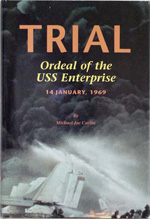 an A3 Skywarrior parked on the #4 elevator on the port side of the ship. It seems as if that was the moment our hose went limp but I learned later from Michael Joe Carlin's book 'TRIAL Ordeal of the USS Enterprise 14 January 1969' that the explosion had nothing to do with our hose going dead. The book is great reading for anyone interested in what happened that day. The explosion at the A3 caused a rain of shrapnel to go through the air and everyone ducked and ran for cover. I narrowly missed being hit by a piece of debris that landed about 10 feet behind me. I was looking for another hose to join when a yellow shirt grabbed me and two other guys and said we needed to go below and get more people to help. So we entered the island and started down, eventually encountering waist deep foam. When we got to the hangar deck and rounded up some people we discovered that we could not get back up to the flight deck. So we joined a hose team keeping water pouring on hot spots in the overhead caused by burning fuel flowing down from the flight deck. an A3 Skywarrior parked on the #4 elevator on the port side of the ship. It seems as if that was the moment our hose went limp but I learned later from Michael Joe Carlin's book 'TRIAL Ordeal of the USS Enterprise 14 January 1969' that the explosion had nothing to do with our hose going dead. The book is great reading for anyone interested in what happened that day. The explosion at the A3 caused a rain of shrapnel to go through the air and everyone ducked and ran for cover. I narrowly missed being hit by a piece of debris that landed about 10 feet behind me. I was looking for another hose to join when a yellow shirt grabbed me and two other guys and said we needed to go below and get more people to help. So we entered the island and started down, eventually encountering waist deep foam. When we got to the hangar deck and rounded up some people we discovered that we could not get back up to the flight deck. So we joined a hose team keeping water pouring on hot spots in the overhead caused by burning fuel flowing down from the flight deck.
I have three vivid memories of that time.
First, going back to my compartment to get my blanket and pillow to sleep on an airplane, I remember the stench of burnt flesh and the vision of what used to be a head on the port side outboard side of the compartment that was now a gaping hole with plumbing hanging loosely and the sun shining through the hole.
 Second, I had gone to the forward galley to get something to eat and, not having been in that galley before, I got lost trying to find my way back up to the hangar deck. I finally found a ladder up and walked out into the forward part of the hangar deck which was being used as a makeshift morgue. Second, I had gone to the forward galley to get something to eat and, not having been in that galley before, I got lost trying to find my way back up to the hangar deck. I finally found a ladder up and walked out into the forward part of the hangar deck which was being used as a makeshift morgue.
Third listening all night, as I was trying to get some sleep on the wing of an A6, to the ship communication system (1MC) repeating the names of all of the crew members who had not reported in for muster following the fire.
OF THE MEDALS, AWARDS AND QUALIFICATION BADGES OR DEVICES YOU RECEIVED, WHAT IS THE MOST MEANINGFUL TO YOU AND WHY?
 First, my Chief's anchor means a lot to me as well as being recognized as a "Genuine Chief" through my initiation in 1987. I moved into a new area of responsibility and thoroughly enjoyed my assignments. My selection to Senior Chief after the minimum two years as a Chief came as a total surprise to me. The Blue Dolphins CPO Association was composed of the most professional men I have ever worked with and it was an honor and privilege to be a part of that Association. First, my Chief's anchor means a lot to me as well as being recognized as a "Genuine Chief" through my initiation in 1987. I moved into a new area of responsibility and thoroughly enjoyed my assignments. My selection to Senior Chief after the minimum two years as a Chief came as a total surprise to me. The Blue Dolphins CPO Association was composed of the most professional men I have ever worked with and it was an honor and privilege to be a part of that Association.
Second, I would say that my Good Conduct Medals both for active duty and reserve are very meaningful to me. I am very proud to have received these awards for my entire term of service.
WHICH INDIVIDUAL PERSON FROM YOUR SERVICE STANDS OUT AS THE ONE WHO HAD THE BIGGEST IMPACT ON YOU AND WHY?
That would have to be my best friend Manuel (Manny) Cedillos. He was from El Paso, Texas of which he was very proud and we became fast friends from the time we met. It was one of those times when you meet someone and you know right away you are going to be great friends. We worked together, double dated, went on liberty overseas together, played handball together.. just about everything. We were the best of friends. When the ship went to Singapore after the Korea visit, he and I went on liberty together.
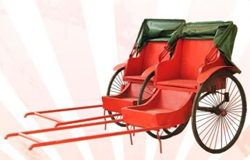 My favorite memory of that visit was when we were on a street corner trying to decide where to go next and about 4 of the rickshaws(if that is the right word) came up with all of the drivers hollering at us to use them. He finally had enough and started yelling at them in Spanish. I have no idea what he said to them and they probably didn't either but they all took off to get away from him as fast as they could. He got a chance to fly to Hong Kong and took my movie camera with him and got me some great movies so I would see what the city looked like. My favorite memory of that visit was when we were on a street corner trying to decide where to go next and about 4 of the rickshaws(if that is the right word) came up with all of the drivers hollering at us to use them. He finally had enough and started yelling at them in Spanish. I have no idea what he said to them and they probably didn't either but they all took off to get away from him as fast as they could. He got a chance to fly to Hong Kong and took my movie camera with him and got me some great movies so I would see what the city looked like.
I lost track of him after I was released from active duty and have even searched TWS and Military.com for him but have found no entries for him. I hope someone who reads this will contact me on how I can get back in touch with him.
WHAT PROFESSION DID YOU FOLLOW AFTER THE SERVICE AND WHAT ARE YOU DOING NOW? IF CURRENTLY SERVING, WHAT IS YOUR CURRENT JOB?
After I was released from active duty, I went to college to go to Pensacola. When I returned from Pensacola I went back to college and got my certification as a Mathematics teacher in Florida. I taught school in the junior high school for 3 years and went to Oklahoma  City to train to be an Air Traffic Controller. I had started flying lessons while I was interning and was also building flight time and collecting licenses and certifications while I was a teacher. I ended up flunking out of controller school so I returned to my teaching profession. I completed my Masters Degree shortly after returning. I taught school for a total of 13 years when I got an opportunity to start a full-time flying career at a flight school in Orlando. During all of this I was still in the Naval Air Reserve at NAS Jacksonville, Fl and eventually at NAS Cecil Field, Fl. I worked at the flight school for 1 ½ years eventually becoming the Chief Flight Instructor for the school. I then had the opportunity to interview for a position with Comair Airlines as an airline pilot. I was hired there in June 1990. I retired from the Navy in March 1994 at a wonderful retirement ceremony at NAS Cecil Field, Fl. City to train to be an Air Traffic Controller. I had started flying lessons while I was interning and was also building flight time and collecting licenses and certifications while I was a teacher. I ended up flunking out of controller school so I returned to my teaching profession. I completed my Masters Degree shortly after returning. I taught school for a total of 13 years when I got an opportunity to start a full-time flying career at a flight school in Orlando. During all of this I was still in the Naval Air Reserve at NAS Jacksonville, Fl and eventually at NAS Cecil Field, Fl. I worked at the flight school for 1 ½ years eventually becoming the Chief Flight Instructor for the school. I then had the opportunity to interview for a position with Comair Airlines as an airline pilot. I was hired there in June 1990. I retired from the Navy in March 1994 at a wonderful retirement ceremony at NAS Cecil Field, Fl.
I continued to fly with Comair in positions as First Officer on the EMB-120 Brasilia aircraft, promoted to Captain on the Brasilia and finally transitioned to the CRJ-65 Canadair Regional Jet as Captain in 2000. On November 11, 2009 I flew my last flight and retired from Comair on November 16, 2009.
I am now enjoying my life as a retired teacher, as a retired Navy Senior Chief Petty Office and as a retired airline Captain. I enjoy time with my granddaughter Melanie and my new grandson Christopher, being on the computer and just relaxing finally. I attempt to play golf at least once a week and enjoy walking several times a week.
In 2010 and 2011 I participated in the Space Coast Marathon/Half Marathon in Cocoa, Florida each time walking the half marathon. I do not intend to do that again. I did those because I had never done anything like that again and twice is enough for me.
HOW HAS MILITARY SERVICE INFLUENCED THE WAY YOU HAVE APPROACHED YOUR LIFE AND CAREER?
 Serving in the armed forces has given me my work ethic. I grew up when I joined the Navy. When I was in college during the 70s it was very easy to tell who had served and who had not. Serving gave me a profound sense of who we are as Americans and a strong dislike for anyone who wishes to change who we are and what we want for ourselves and our families. I feel a bond for all who served and a strong respect for those who were in-country in any of the conflicts Americans have served in and faced danger on a 24/7/365 basis to preserve our way of life. Serving in the armed forces has given me my work ethic. I grew up when I joined the Navy. When I was in college during the 70s it was very easy to tell who had served and who had not. Serving gave me a profound sense of who we are as Americans and a strong dislike for anyone who wishes to change who we are and what we want for ourselves and our families. I feel a bond for all who served and a strong respect for those who were in-country in any of the conflicts Americans have served in and faced danger on a 24/7/365 basis to preserve our way of life.
IN WHAT WAYS HAS TOGETHERWESERVED.COM HELPED YOU MAINTAIN A BOND WITH YOUR SERVICE AND THOSE YOU SERVED WITH?
So far I have been unsuccessful in locating any of the people I served with on TWS but I have not given up hope. I will keep looking and doing searches hoping those people will join and I can reconnect with them.
| |
|
Share this Voices on:
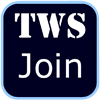

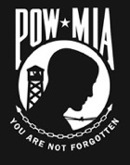

|
|
TWS VOICES
TWS Voices are the personal stories of men and women who served in the US Military and convey how serving their Country has made a positive impact on their lives. If you would like to participate in a future edition of Voices, or know someone who might be interested, please contact TWS Voices HERE.
This edition of Navy Voices was supported by:
Navy.Togetherweserved.com
For current and former serving Members of the United States Navy, TogetherWeServed is a unique, feature-rich resource enabling Naval personnel to re-connect with lost Shipmates, share memories and tell their Navy story.
To join Navy.Togetherweserved.com, please click HERE.
|
|